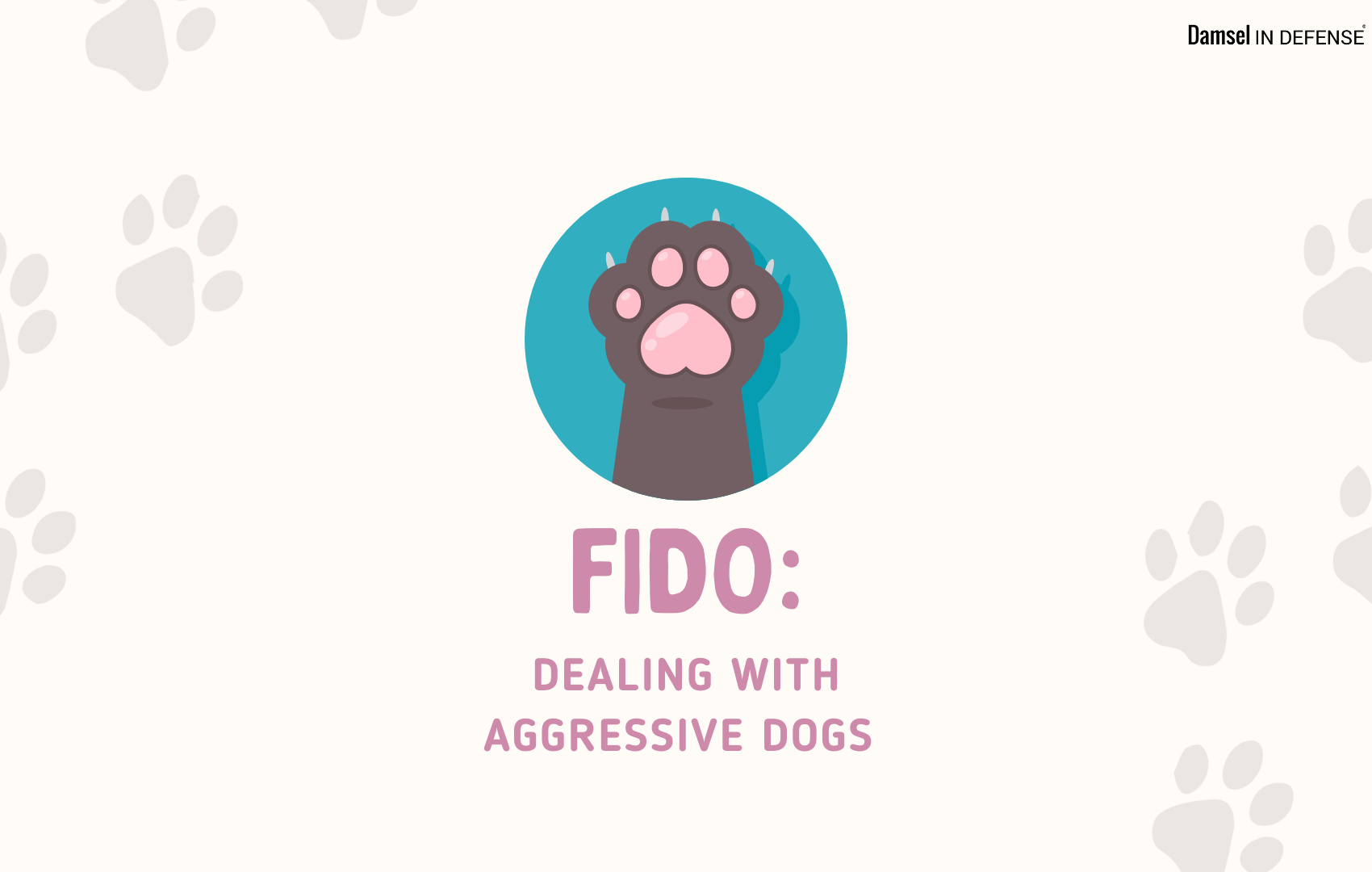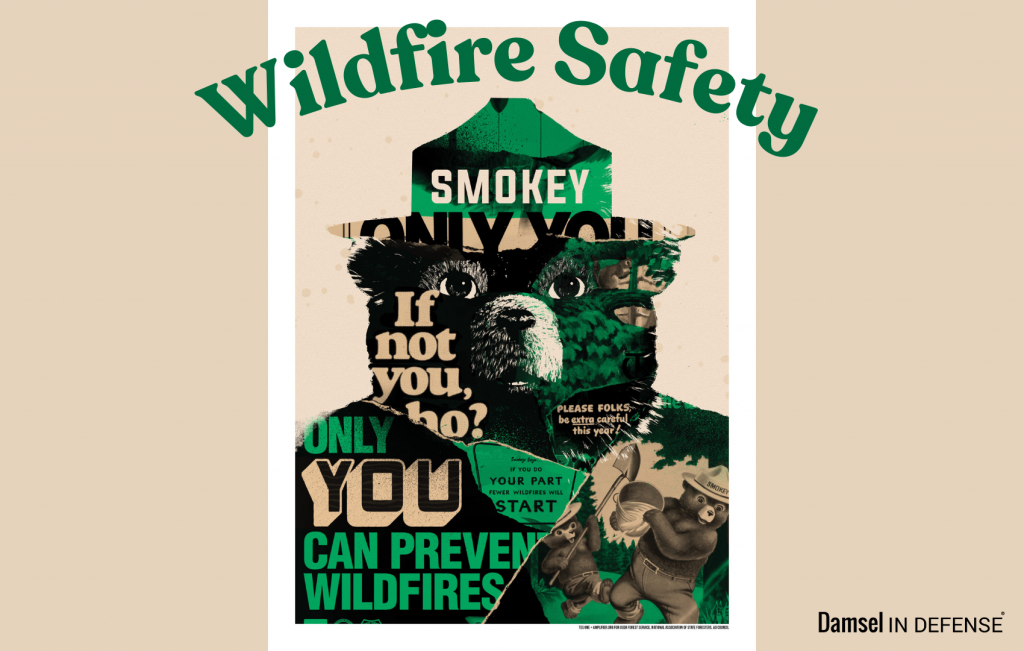
Aggressive dogs can be encountered anywhere, from big cities to the rural countryside. In the United States, there are roughly 5.9 million dogs living on the streets and many of them have been doing so for their entire lives which often causes a more aggressive behavior to protect what little they have. Most strays tend to keep to themselves and stay away from humans; however, what happens if you run into one? Can you defend yourself against an attack? We have provided a couple tips to protect yourself from aggressive strays you may encounter.
FIDO Method:
The best way to deal with aggressive dogs is to practice and remember the FIDO Method. FIDO stands for Freeze, Identify, Distract, Overpower. By following this protocol, you can ensure the safety of yourself and your pet.
Freeze
The first step to dealing with any aggressive dog encounter is to not make any sudden movements. By freezing in place, you alert the dog that you are not in any way a threat to it, its property, or owner. It is recommended to also pick up small children or dogs and to quiet the smaller dog as much as possible. If you are walking a medium or large dog, try and stand between the aggressive breed and your pup if possible and safe to do so. More tips to remember are:
- Do not panic
- Stay calm
- Set off your Silent Signal or Hear Me Out to let your emergency contacts know you might be in danger
- Look away but do not turn your back or let the dog leave your sight
Identify
Next, identify the dog’s position. If his ears are pulled back and lying flat against his head, growling and barking, and in an even and steady run with his body low to the ground then the dog is displaying signs of aggression. Signs of a simply playful personality would be an upright position of ears, a more high pitched bark, and relaxed body positioning.
It is good to assume all stray dogs are threats as their background is completely unknown and they can be aggravated easily. If you see a stray dog, we recommend calling the local authorities or your local animal control. If the dog has a tag and is around a specific home or set of homes, we recommend contacting the number on their tag or the homeowner. Should the dog be friendly, you can also take it to your local shelter to search for any microchips or for safekeeping until the owner responds. Note: In some states and counties, it is illegal to keep stray or abandoned animals without first contacting Animal Control and/or your local Humane Society.
Distract:
If you live in an area where aggressive dogs are common or if you have a neighbor who often chooses to let their aggressive dog roam their unfenced property, we recommend carrying a toy or treat (with the owner’s permission if applicable) on you during your walks or if you are out and about. Should the dog begin to approach in an aggressive manner, you can throw the toy or treat the opposite direction to you to give the dog something else to focus on. Other great distractors are water bottles, bags, or sweatshirts. While this tactic is not foolproof, the chances of you getting away unscathed would be greater if you attempted to distract the dog. Another popular tool is using the Striking Distance – Stun Baton or any of our Stun Devices to send a test fire to let the dog know you are a bigger threat. Often, the sound alone is enough to make big breeds back down.
*Remember: If you have a pup of your own, use the Pavlov method to get your dog used to the sound so they do not run off as well at the sound of the Striking Distance or other stun device!
Other useful tips:
- Do not try to sweet or “baby” talk while holding the treat or toy
- Do not tease or try to play with the aggressive dog
- If carrying treats, try using a harder to chew treat such as Bully Sticks, Tendon Chews, Antlers, or Yak Chews
- Always throw as far away from you as possible and preferably in the opposite direction
- Do not throw then sprint away as the dog may see you run and begin to chase. After throwing the toy, slowly back away of the dog goes for the distraction and do not turn your back to the animal
Overpower:
In the event that the above steps fail and the dog begins to attack, you need to do everything in your power to ensure your survival. While dog attacks have decreased, over 5,300 postal workers were attacked by dogs in 2022 and 57% of all fatal dog attacks were ages 16 and under. Males are also 4.9% more likely to be attacked by dogs and are the majority of fatal attacks. Considering these statistics, it is important to know how to protect yourself when the threat suddenly turns ugly.
- Use distance weapons first, such as our Pepper Spray, Striking Distance – Stun Baton, sticks, or rocks
- Carry the Protected Pepper with Shield technology to not only fend off the dog, but to let others know you are in danger if no one is around!
- If you have an inanimate object such as a backpack, sweatshirt, or bag you have not thrown, use it as a barrier between yourself and the dog. Try not to let the dog have it as it may let go and lunge after you again.
- Now is the time to yell and scream for help.
- Do not be afraid to kick, punch, and hit the dog in the throat, nose, or other exposed sensitive areas. If possible, grab the back of the dog’s neck and push it to the ground, using your body weight. Do not do this if the dog is or resembles a pitbull, rottweiler, or German Shepherd as they are bred to be fighters and will not go down easily.
- If it is a larger, stronger breed, defend yourself by rolling yourself into a ball on the ground and covering your face, chest, and throat. If carrying a child, wrap yourself around them to ensure their safety. Release small dogs to hopefully allow them to get away. Resist the urge to scream or roll away as this may provoke the dog more. The dog may decide you are no longer a threat and back off.
After a dog attack, always back away slowly and keep your eyes on the dog making no sudden movements. Wash wounds carefully and thoroughly and apply sterile bandages. Keep an eye on the wound for any signs of infection, such as warmth, increasing tenderness, and oozing puss. For these symptoms, worse injuries, and any wounds to a child, see a doctor right away. If your pet has been injured, take it to your local emergency vet right away.
To learn more about the products mentioned, contact your local Damsel Safety Educator here.
To report a dog attack, lost dog, or stray dog, call your local non-emergency line or your local animal humane society.



